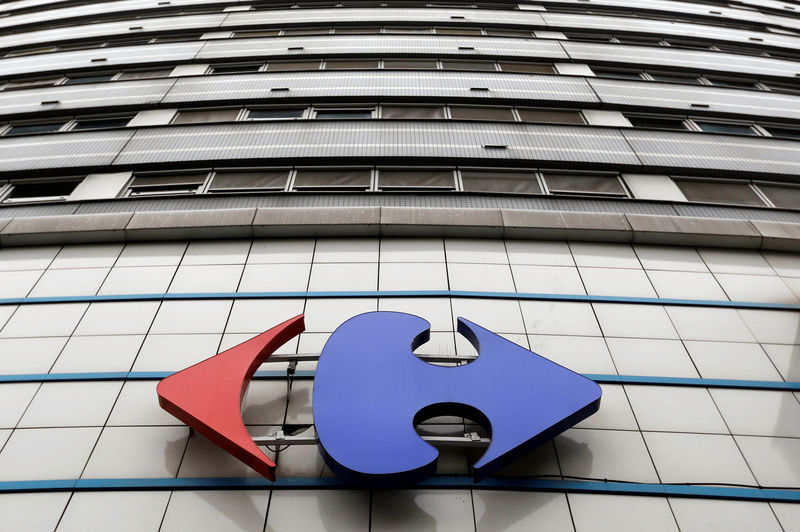This post was originally published on this site
https://i-invdn-com.investing.com/trkd-images/LYNXMPEJ6J128_L.jpg
BEIJING (Reuters) – Every other Sunday, Beijing-based tennis coach Liu Zheng follows a routine: breakfast with her husband, a visit to a supermarket and then a drive later in the day to see her parents for a meal.
The supermarket, however, is not one in her neighbourhood. Instead, she opts to drive a two-hour round-trip to a branch of Walmart-owned U.S. warehouse chain Sam’s Club, where she spends at least 2,000 yuan ($276.39) each time stocking up on goods ranging from Japan’s Ippudo instant noodles to cheesecakes.
While long a phenomenon in the United States, Chinese shoppers are just starting to fall in love with membership club warehouses such as Sam’s Club and Costco (NASDAQ:COST), spurring their expansion and the emergence of local rivals.
There are now 11 of the chains in China, seven of which launched in the past three years, including outlets from local supermarket chains Yonghui Superstores and Alibaba (NYSE:BABA)’s Freshippo.
Sales at warehouse clubs in China more than doubled to $3.7 billion last year from $1.8 billion four years earlier, Euromonitor data shows.
But the membership stores account for only 0.3% of sales in the grocery purchase sector in China, well below the 11% rate in the U.S., according to the data firm, indicating there is still a lot of room for growth.
Warehouse clubs grew in popularity in China during the pandemic when the fear of lockdowns drove people to keep a ready stock of groceries at home. While COVID-19 curbs have lifted, interest has persisted as shoppers seek better value deals amid a slowing Chinese economy.
The membership stores are also gaining ground amid a sales decline in China’s hypermarket sector, which struggled with a shift towards online purchases during the pandemic. Walmart (NYSE:WMT) has shut many of its eponymous smaller format stores, as has Suning.com-backed Carrefour (EPA:CARR) China and JD (NASDAQ:JD).com-backed Yonghui.
The club warehouse format “is the only bright spot,” said Derek Deng, who leads Bain & Company’s consumer products practice in greater China.
In the first quarter of 2023, the number of buyers at such stores grew 30.3% from a year earlier, while purchasing frequency was up 12.8%, according to data from Bain and Kantar Worldpanel.
SAM’S MOMENT
The current market leader is Sam’s Club, which opened in 1996 and expanded slowly in the first 25 years, with 44 stores to date across 25 Chinese cities and 4 million families as members as of December 2022.
“Sam’s Club are doing well. They appeal to a higher demographic within China,” Walmart International CEO Judith McKenna said during an investor briefing in April.
Six of its stores opened last year and it will have 48 by the end of this year, seizing the moment to grow as Chinese social media users post lists of their favourite Sam’s Club products such as Chobani yoghurt and Bouchard dark chocolate and long queues form at its new store openings.
Its chief foreign rival Costco only has four stores in mainland China, with plans to increase to six by year-end, according to local media. Costco did not respond immediately to a request for comment.
To stay ahead, Sam’s Club is focused on providing curated and unique products to members, a Walmart spokesperson said, while it also offers online delivery in as little as 30 minutes to keep up with local rivals.
Sam’s Club also has partnered with well-known brands like Beijing Da Dong Roast Duck, an upscale restaurant that supplies a packaged ready-made Peking duck product that costs about $22.
FRESHIPPO IN FOCUS
Sam’s Club’s local rivals have largely copied its store concept, analysts say. Annual fees for a standard membership at the Walmart offshoot and others such as Sun Art Retail Group (OTC:SURRY)’s M Club and Fubi, backed by Beijing Yaodi Agriculture, range from 258 yuan to 365 yuan.
Local warehouse chains have differentiated themselves so far by targeting smaller, less affluent cities. M Club opened its first outlet in Yangzhou and Beijing Hualian Supermarket set up a membership shop in Lanzhou. But their product offering tends to be less curated, with most simply packaging their existing range as bulk buys.
“Every player needs to find unique value propositions to attract consumers, besides just adding membership on top of a traditional hypermarket retail model,” Bain’s Deng said.
The standout rival to Sam’s Club is Alibaba’s popular supermarket chain Freshippo, which began opening membership-style Freshippo X stores in 2020 and has nine outlets, six of which are in Shanghai, according to local media.
Freshippo, which targets China’s younger, digitally savvy urbanites, has been widening its range of imported and exclusive products, from well-known Japanese chocolates to seasonal specialty fruits from different Chinese provinces.
The chain was the only rival Walmart’s China CEO Christina Zhu mentioned in February when delivering a speech internally about the competitive landscape Sam’s Club faced in China, according to two people familiar with the meeting who were not authorised to speak with media.
But Sam’s Club was ultimately confident it is currently miles ahead, one of the people said.
“She did not mean it as a real competitor,” the person added. “No one is close to Sam’s. She means if there is anyone that potentially can be a rival then it is (Freshippo) because the grocery supermarket is very innovative with their food offerings too.”
Walmart declined to comment on the internal meeting.
($1 = 7.2361 Chinese yuan renminbi)

